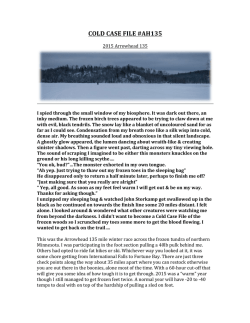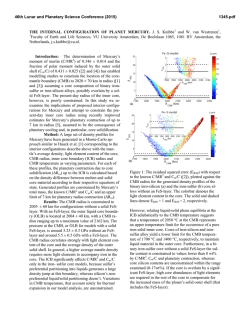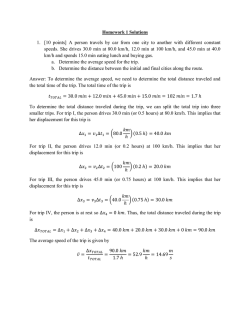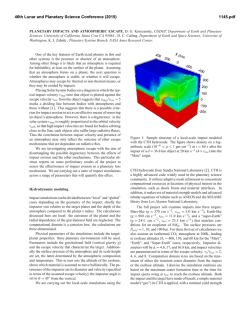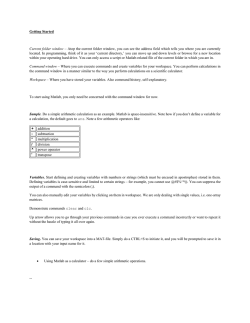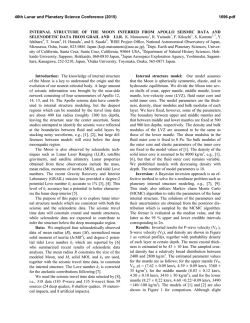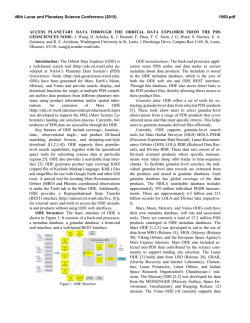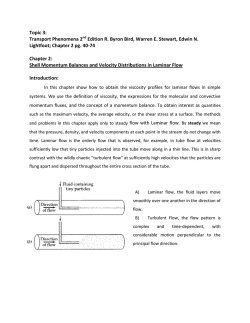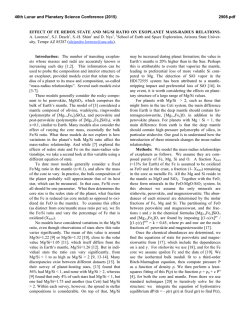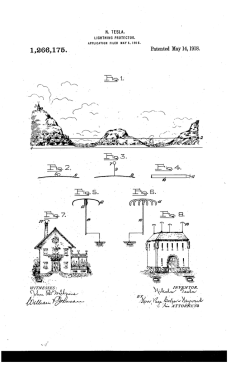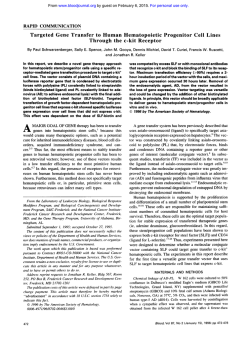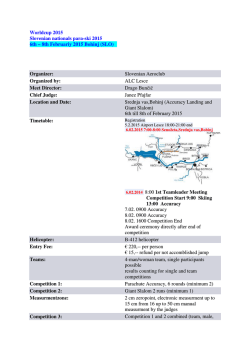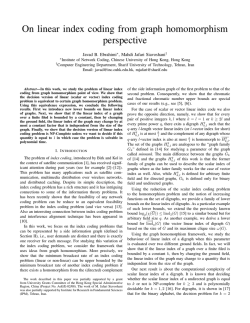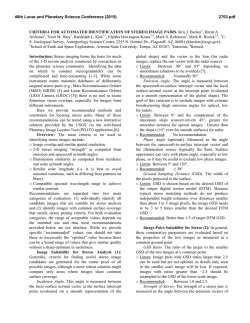
MATH 281-2 ISP Math Test 1 This test is worth 60 points, at 15
MATH 281-2 ISP Math Test 1 This test is worth 60 points, at 15 points per question. Display all work in an orderly fashion. 1. A descending parachute has the shape of an inverted parabaloid z = 9 − (x2 + y 2 ), z > 0. Air passes through the parachute (but not out of the bottom) with a velocity vector field of k = (0, 0, 1). a.) Find a vector field F so that ∇ × F = k. b.) Show that the flow rate (flux) of air through the surface of the parachute is the area of the disk of radius 3 centered at the origin in the xy-plane. One way to do this is to use Stokes’ Theorem twice. 2. A 20kg sled driven by a rocket providing an acceleration of 40 m/sec2 (about 4g) has achieved a velocity of 50 m/sec when it enters a water trough and meets resistance equal to five (5) times its velocity. Assume no other forces act. a.) Write an ODE describing the velocity of the sled at t seconds while traveling along the trough. Specify the initial condition. b.) Find a formula for the distance the sled had traveled along the trough at time t. 3. The ODE for a harvested logistic population is y 0 = y(1 − y/5) − 6/5. a.) Find the equilibrium solutions, sketch the direction field, and sketch a few representative solution curves. What is the smallest initial condition y(0) = y0 for which the population will not die out? Hypothesize which equilibrium solution is asymptotically stable. b.) Solve this equation if y(0) = 1. For what range of t is this solution valid? (Remember, populations must be positive.) 4. Give a series solution to the initial value problem y 0 + 2ty = 1, y(0) = 0. Find the radius of convergence of this power series. Answers 1. a.) F(x, y, z) = (0, x, 0) will do. Other answers are possible. 2.) Let S be surface z = 9 − (x2 + y 2 ), 0 ≤ z ≤ 9 with the outward normal vector. Then the flux is the right hand side of the equation (from Stokes’s Theorem) Z ZZ F · dr. k dS = C S where C is the circle of radius 3 in the xy-plane going counterclockwise. Again applying Stokes’s Theorem Z ZZ F · dr = k dS C D where D is the disk in the xy-plane bounded by C. Since k is also the normal vector to D and k · k = 1, we have ZZ ZZ k dS = dA = Area(D). D D You could parametrize S or D in various ways if you would find that a more comfortable way to evaluate the integral. 2.a.) v 0 = 40 − (1/4)v with v(0) = 50 m/sec. b.) v = 160 − 110e−(1/4)t , so the distance is 160t + 440e−(1/4)t − 440. 3. a.) The equation can be rewritten as 1 y 0 = − (y − 2)(y − 3). 5 The equilibrium solution y = 3 is stable. If y0 < 2, the population will die out. 3 − 4e−(1/5)t b.) y = valid with t ≤ 5 ln(4/3); that is, when the numerator is pos1 − 2e−(1/5)t itive. There is a vertical asymptote at t = 5 ln(2), although the question does not ask you to find this. ∞ X 22 5 23 2n t2n+1 2 t − t7 − · · · = (−1)n . 4. y(t) = t − t3 + 3 3·5 3·5·7 1 · 3 · . . . · (2n + 1) n=0 Since 2 2|t| lim =0 n→∞ 2n + 3 the ratio test implies the radius of convergence if ∞.
© Copyright 2024



